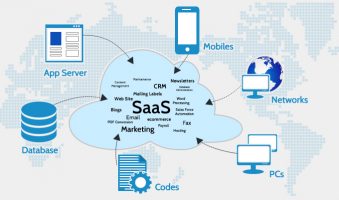There have been multiple instances when a CIO would have to be entrusted with deciding between picking expert applications versus the general consolidated applications within the ERP. The upsides of such a supposedly perfect incorporated framework with a well-designed setup, provided that there are zero integration failures and no data irregularities, prove to be sound reasons to keep one from assessing cutting edge programming intended for a specific business purpose.
Beyond this, the investment on a standard ERP is enough to avoid someone from repeatedly testing different options. This is also the case for most authorized programming conveyed at captive data centres.
The idea of Software as a Service (SaaS) was initially about outsourcing framework worries to the yet another provider. It also served excessive customization is not such a good idea. It practically took away the battle of building a business case for a patch fix or an update. However, the exit loads were still high. Aside from concerns identified with the security of business data, complex licensing and cost structures kept most people away from the older SaaS concept.
Cloud computing, which started from the idea of hardware infrastructure virtualisation, gradually advanced to vastly shared environments called the Public Cloud. Organizations like Amazon realised soon enough that the infrastructure virtualization could be a huge advantage. When they utilised this for their benefit, they began building it for others as well. Not many jumped at the idea of taking a massive leap of faith, but a few went out on a limb and went ahead with deploying their product into a public cloud. Also called the ‘real’ cloud, the advantages were huge from both the cost point of view as well as from making the world a lot more creative place.
The entry load for experimentation was low to the point that it brought forth a considerable measure of entrepreneurial thoughts. Entire organizations were conceived on the cloud and fundamentally disrupted the way we collaborated with this innovation. Nearly everybody from the normal consumer to an exploration researcher had something or the other to gain.
One factor which made cloud a raging success was its ability to dynamically scale-up to immense proportions. The concept of IaaS (Infrastructure as a service) got a new life. It started making more sense than ever before to leverage IaaS. Now, it was sensible to abstain from making enormous capital speculations and keeping buffer capacities based on future calls.
Organizations offering Cloud SaaS as their services opened the doors for many others. Today, almost all software biggies from Microsoft to Oracle to SAP are offering cloud SaaS solutions for organisations to leverage. Going by the trends, it looks quite evident that sooner or later this is the way software will be expended by not only by people and SMEs but also by large enterprises.
Cloud SaaS enables organizations to move from focussing on running to focussing on developing and transforming themselves. Using a SaaS solution that is Cloud-based, mobile-accessible, and eliminates budgetary constraints, has exponential advantages which save time and money.
Concepts such as the mobile office or anywhere office can be enabled without too much an effort. Business data and applications are accessible to the workforce in a secure manner, irrespective of where they are. Storage costs and concerns about capacity planning are significantly reduced with cloud SaaS. CIOs need to stress less about getting ready for high accessibility and disaster recovery since a genuine Cloud SaaS vendor will automatically deal with these components.
But with the abundant nature of SaaS delivering vendors, we need to pick ours carefully. Whereas the vendors need to focus more on security, offer high standards of identity and access management. For cloud SaaS to bode well, the vendors need to constantly upgrade their solution and license and price the model dynamically.
Today, there are SaaS applications for fundamental business technologies, such as email, document management, sales management, customer relationship management (CRM), financial management, human resource management, billing and collaboration. What earlier took months to plan and deploy; now takes mere minutes to set up.
The instant gratification provided by cloud SaaS solutions allow business to be more agile. Businesses can now try and buy even the domain-specific solutions such as Engineering simulation and Healthcare.
Cloud SaaS seems to be gaining momentum and is not lagging far behind. The freedom that Cloud SaaS provides has the potential to change further the way business leverages technology.

